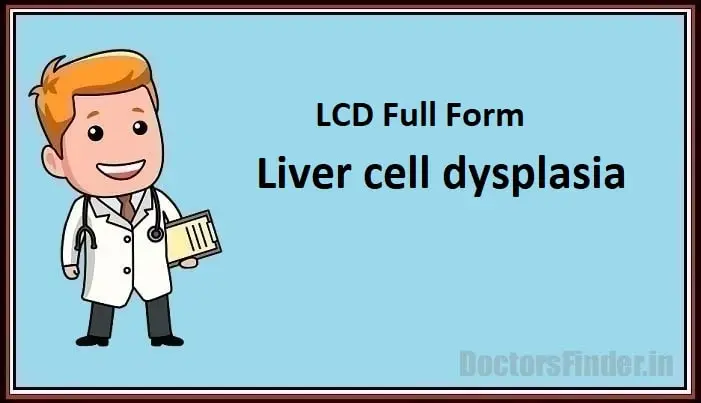The full form of LCD in medical term is Liver cell dysplasia.
Hepatocytes, the liver cells, are impacted by a rare disorder called liver cell dysplasia. It is a form of liver disease characterized by aberrant alterations in the composition and structure of liver cells, which may compromise liver function and cause potentially life-threatening consequences.
A type of hepatic nodular hyperplasia known as liver cell dysplasia is characterized by developing many nodules in the liver. These nodules are not malignant, but if they enlarge to the point where they affect liver function, they may become problematic. A particular subtype of nodular hyperplasia known as liver cell dysplasia is characterized by aberrant changes in the size and structure of the liver cells.

Although the precise ethology of liver cell dysplasia is unknown, it is believed to result from genetic and environmental factors, including exposure to poisons and chemicals. Moreover, several prescription drugs and health issues, like autoimmune illnesses, might increase the likelihood of acquiring liver cell dysplasia.
The severity of the disorder and the existence of any underlying medical conditions affect how liver cell dysplasia is treated. The nodules can frequently be monitored with routine imaging exams without needing to be treated. Surgery may be required to eliminate the damaged tissue if symptoms or the nodules are triggering liver damage.